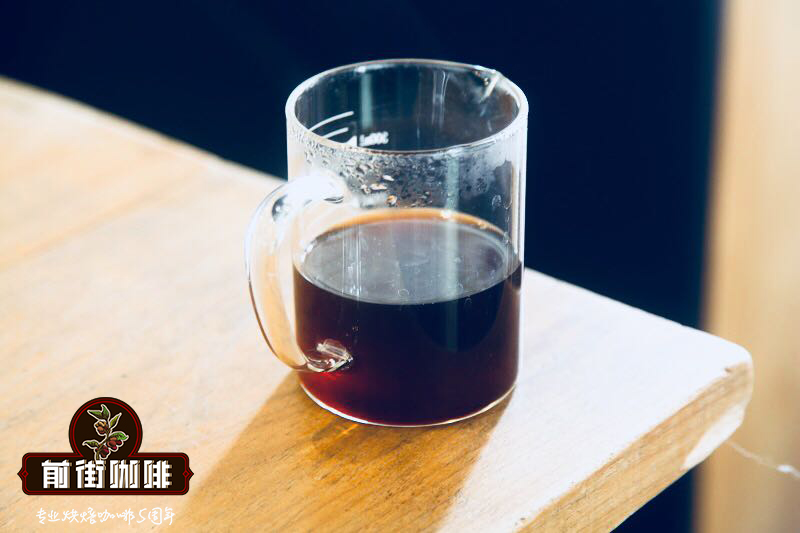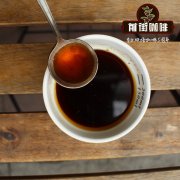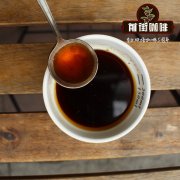How to drink traditional Turkish coffee?

Professional coffee knowledge exchange more coffee bean information please follow the coffee workshop (Wechat official account cafe_style)
In this era of boutique coffee, when it comes to brewing props, when it comes to most coffee reference books, there are no more than all kinds of hand pots, filter cups, siphon pots, mocha pots, and so on, and in the end, we always put on the "Turkish pot." but it's often just a few words.
Looking back at the development of coffee, it is not too much to say that Turkish coffee accounts for about 2/3 of coffee history. Before the Turks began to boil roasted beans in small pots, Arabs had been using a large pot called Dallah, like a big-billed bird, to cook extremely light-roasted green coffee. The Arabs put the water and coffee into a large pot, boil it on a charcoal fire, then simmer it out, leave the fire and stuffed with bean curd and rose water. And other compound spices, this is Qawha (meaning Arabian wine), which was drunk by the early Sufi sect to help lift spirits during night prayers. It was not until 1517 when the Etoman Empire took Cairo, Yemen and other places that coffee officially entered the life of the Etomans, and by 1554 there was the first coffee shop in Istanbul. The Turks modified the Arab pot, using a small long-handle pot called Cezve (called Ibrik in Greece), which, as usual, threw water and coffee into the pot and cooked it over charcoal fire. Slightly different from the early Arabs, they were drinking "original" coffee from Yemen, which was unseasoned. As we now know, coffee needs to be roasted to release more flavor, which was probably first discovered by the Turks. Subsequently, the Dutch successfully smuggled coffee trees back home, and coffee was able to enter the western society. Siphon coffee was invented in 1841, and Italian machine and filter paper coffee were born one after another. The traditional pot cooking, which has occupied coffee for such a long history, was also listed as a world intangible cultural heritage in 2013.
Usually when talking about Turkish coffee, people's first impressions often stay in the strong bitter taste and the pleasure of using powder to make coffee divination after drinking coffee, but it is difficult to delve into its taste. However, it is true that not every old school can be turned into a classic. After the great increase in coffee demand, Turks who used to drink Yamen beans turned to Brazil to buy low-cost coffee that is more in line with commercial needs. In 1974, the time and space background of boutique coffee was to improve the quality of coffee as a distinction between coffee and commercial coffee, in order to achieve better economic benefits, which began to extend to the source. It includes the topics of producing area flavor, variety preservation, farmers' and producers' rights and interests and so on. Under this inevitable trend, the usual old-school pot cooking in Central Asia, West Asia, North Africa, and Eastern Europe has gradually become a foreign culture, and most tourists always struggle with the rough powder taste, deep baking bitterness, and too sweet authenticity. It is difficult to have the opportunity to further appreciate the essence of ancient methods. If you want to make Turkish coffee at home, the English recipes you can find online are more or less the same as using Turkish commercial coffee powder, adding sugar, and then remember "boiling three!" Second time! " However, those who like the original taste of pure coffee cannot appreciate the commercial, over-extracted (boiled three times) to bitter taste, and even the pre-ground coffee powder has a good chance of going away, so it seems that coffee divination and stories have become the most worthwhile parts of the old-school pot. In fact, many people may not know that the early Turkish coffee was not roasted at all. You see, the so-called French and Italian deep roasting came later, and the bitter impression was not entirely because of Turkish coffee, but more likely from the pan-family taste formed by the early cooking habits that did not require much coffee flavor.
However, from the point of view of inheriting and continuing its substantive value, local young coffee practitioners do not want their traditional culture to convey pure feelings, but also to be able to convince people with taste. Therefore, since the European Fine Coffee Association (SCAE, now merged into SCA) prepared for the first WCIC (World Cezve/Ibrik Championship) Turkish Pot Championship in 2008, we can see that the preparation process is based on the extraction science of coffee, not only using Rosa varieties of high-quality coffee, but also using fresh grinding, not excessive stirring, controlling the extraction time, etc., to brew a cup of clean, clear flavor, more smooth taste of the boutique coffee.
Important Notice :
前街咖啡 FrontStreet Coffee has moved to new addredd:
FrontStreet Coffee Address: 315,Donghua East Road,GuangZhou
Tel:020 38364473
- Prev

Does the sun treatment of coffee affect the quality and flavor of coffee beans?
Professional coffee knowledge exchange more coffee bean information Please pay attention to the coffee workshop (Wechat official account cafe_style) the sun method is the oldest method of coffee treatment. according to literature, the Arabs began to use the sun method to deal with coffee fruit more than 1000 years ago in the 11th century. Because of the refreshing effect of coffee, coffee was introduced into the West from the Arab world at that time.
- Next

How do you make Turkish coffee? How to brew coffee in Turkey without a coffee machine
Professional coffee knowledge exchange more coffee bean information please follow the coffee workshop (Wechat official account cafe_style) said that Turkish coffee is inseparable from Turkish coffee divination. But it's not that everyone has a chance to come to Turkey for a cup of Turkish coffee, so how can you make a perfect pot of Turkish coffee at home? To cook it perfectly.
Related
- Beginners will see the "Coffee pull flower" guide!
- What is the difference between ice blog purified milk and ordinary milk coffee?
- Why is the Philippines the largest producer of crops in Liberia?
- For coffee extraction, should the fine powder be retained?
- How does extracted espresso fill pressed powder? How much strength does it take to press the powder?
- How to make jasmine cold extract coffee? Is the jasmine + latte good?
- Will this little toy really make the coffee taste better? How does Lily Drip affect coffee extraction?
- Will the action of slapping the filter cup also affect coffee extraction?
- What's the difference between powder-to-water ratio and powder-to-liquid ratio?
- What is the Ethiopian local species? What does it have to do with Heirloom native species?

